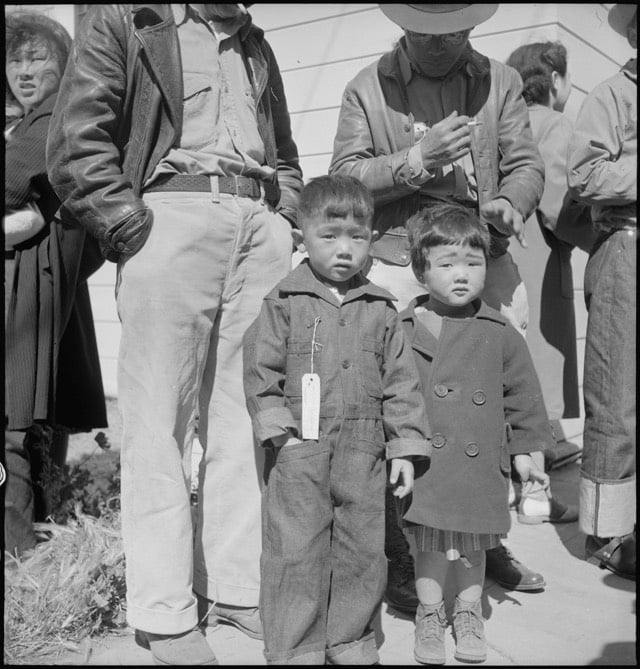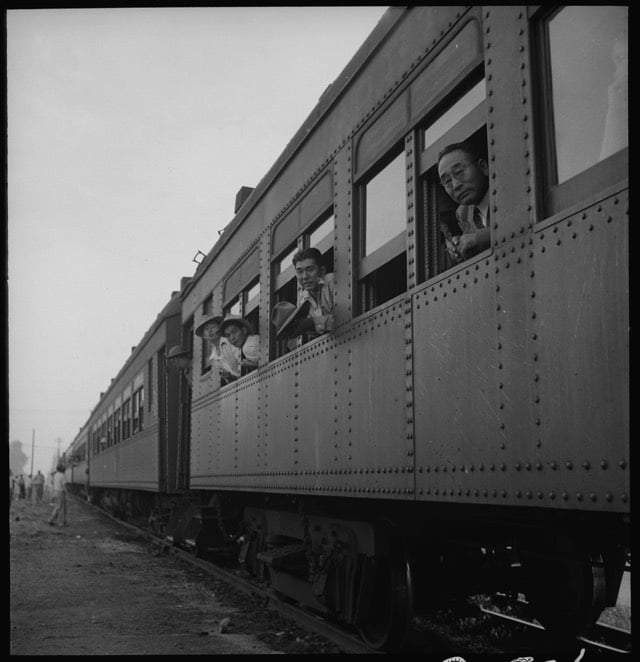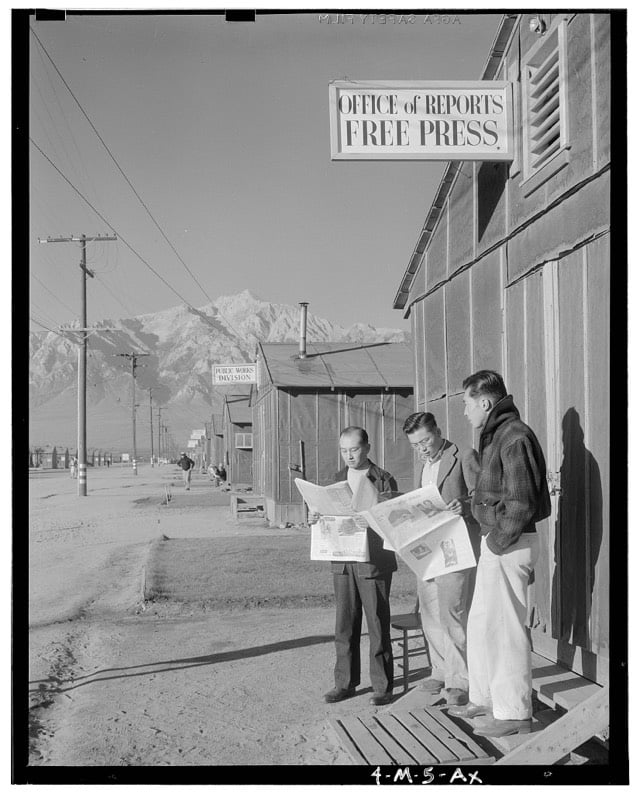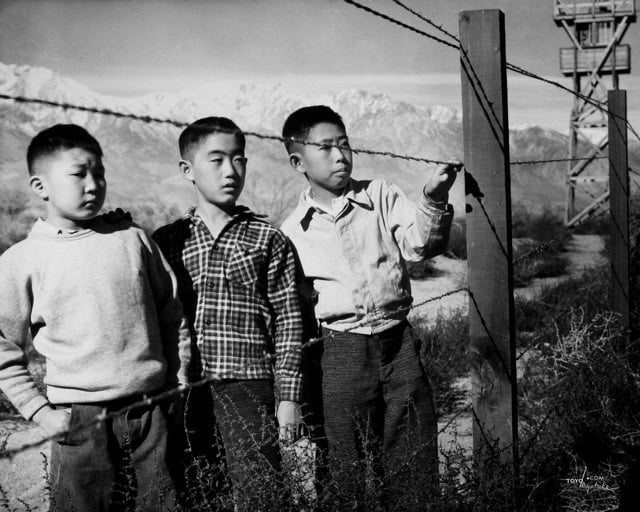Dorothea Lange’s Photos of Japanese Americans’ Imprisonment During WWII


In 1942, the US government hired Dorothea Lange (of Migrant Mother fame) to take photos of the removal and imprisonment of Japanese Americans during World War II. Although Lange quit after a few months because government censors wouldn’t let her shoot images of barbed wire and the bayonets on guards’ guns, she took hundreds of photos documenting this shameful moment in American history.
Famous for her forlorn images of Dust Bowl America, this pioneering female photographer was hired by the War Relocation Authority in 1942 to document the removal and imprisonment of Japanese Americans. Although her skill at candid portraiture was unparalleled, “Lange was an odd choice, given her leftist politics and strong sympathy for victims of racial discrimination,” writes scholar Megan Asaka. The position was a challenging one for Lange as well. “Appalled by the forced exile, she confided to a Quaker protestor that she was guilt stricken to be working for a federal government that could treat its citizens so unjustly.”
The WRA initially gave Lange little instruction about where and what to shoot, but controlled and censored her while she was at work. When documenting life inside the assembly centers and concentration camps, she was prohibited from taking shots of barbed wire and bayonets. Unable to tolerate this censorship and her own conflicted feelings about the work, Lange quit after just a few months of employment with the WRA.
Less ashamed at what they’d done and more worried about PR backlash, the government embargoed Lange’s photos until 1972.
If this all makes you think of some recent comments about Muslims from a certain Republican presidential candidate, history may not repeat itself, but it sure does rhyme.
Update: Ansel Adams also took dozens of photos of the Japanese American interment camp at Manzanar.

So did photographer Toyo Miyatake, who was among the prisoners at Manzanar.

The exclusion order forced Miyatake, his wife and four children, to the concentration camp at Manzanar. He was able to store his photographic equipment but managed to smuggle a camera lens and film plate holder into the camp against government orders. Miyatake told his son Archie that he felt it was his duty to document camp life. An Issei carpenter in camp constructed a box to house the lens, and Miyatake was able to get film into camp by way of a hardware salesman and former client. The photographer eventually asked camp director Ralph Merritt if he could set up a photo studio, and Merritt, who learned about Miyatake from Edward Weston, consented with the provision that Miyatake only load and set the camera, and a Caucasian assistant snap the shutter. Eventually, that restriction was lifted, and Miyatake was designated official camp photographer, and granted the freedom to take photos of everyday life at Manzanar.
Miyatake and Adams met at the camp and began a collaboration. Lange and Adams were friends — he printed Migrant Mother for her — and she was instrumental in convincing Adams to document Manzanar. But she was also critical of his detached approach:
In 1961, Lange said about Adams’s taking landscape pictures at the Manzanar Relocation Center: “It was shameful. That’s Ansel. He doesn’t have much sense about these things.”
Update: Anchor Editions made a page with dozens of Lange’s photos paired with quotes from contemporary sources about the camps.





Stay Connected